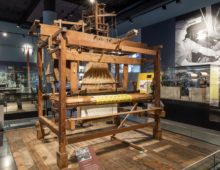Tagged with Benjamin Franklin
Resource : ‘No Stamp Act’ teapot
In the 1700s, a large area of North America was controlled and governed by Britain. In 1765, the British government changed the tax rules for the people living in these American colonies. Large numbers of colonial Americans refused to pay these taxes, complaining they had no representation in the British Parliament and therefore no say over decisions made about their lives. A period of unrest followed which escalated into the American Revolution and the birth of the USA.
Resource : Drawer handle with abolitionist plaque
In the late 1700s, the image of a kneeling, enslaved African man, accompanied by the words ‘Am I not a man and a brother’ became the most prominent emblem for those wishing to abolish the Transatlantic slave trade, in both Britain and America. As well as appearing in books, prints and pamphlets, it was also reproduced on an extraordinary variety of everyday and household items – from crockery and soft furnishings, to jewellery and hairpins.
Resource : Benjamin Franklin after Joseph Siffred Duplessis, based on a work of 1783
Benjamin Franklin (1706–1790) was an American printer, inventor and scientist, who developed an international profile and went on to become a Founding Father of the United States of America, along with men like George Washington, Thomas Jefferson and Alexander Hamilton. He played a key part in the drafting of the Declaration of Independence, the defeat of Britain in the war, and the creation of the American Constitution.
Resource : American revolution
How the American colonies defied Britain, one of the mightiest powers on earth, to secure their independence and form a new federal republic – the United States of America.


